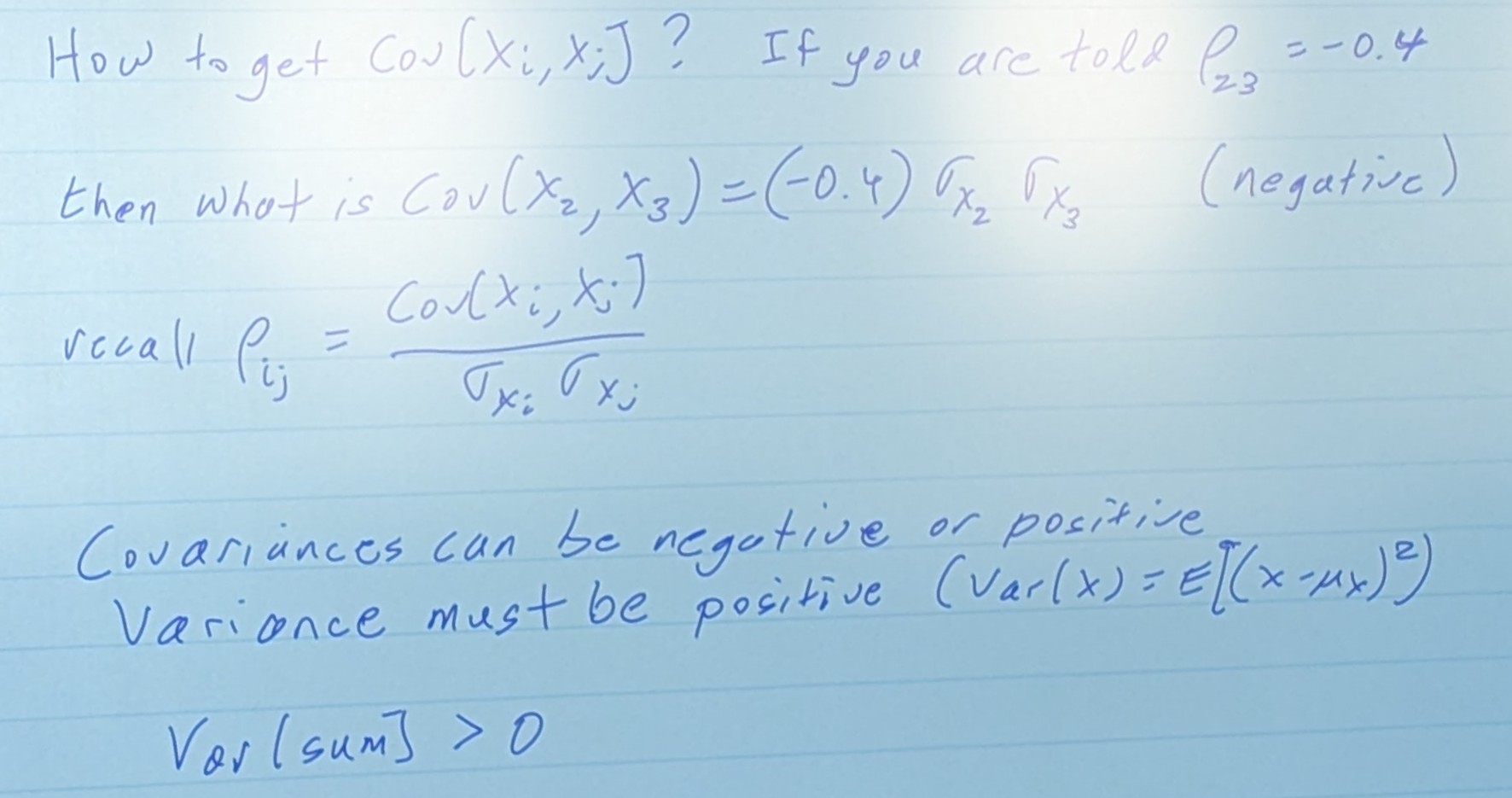Main Descriptors
- Mean: μ
- Balance point, or the first moment
- Median: x͂
- Point which divides the distribution in half
- If the distribution is symmetric about the mean, then x͂ = μx
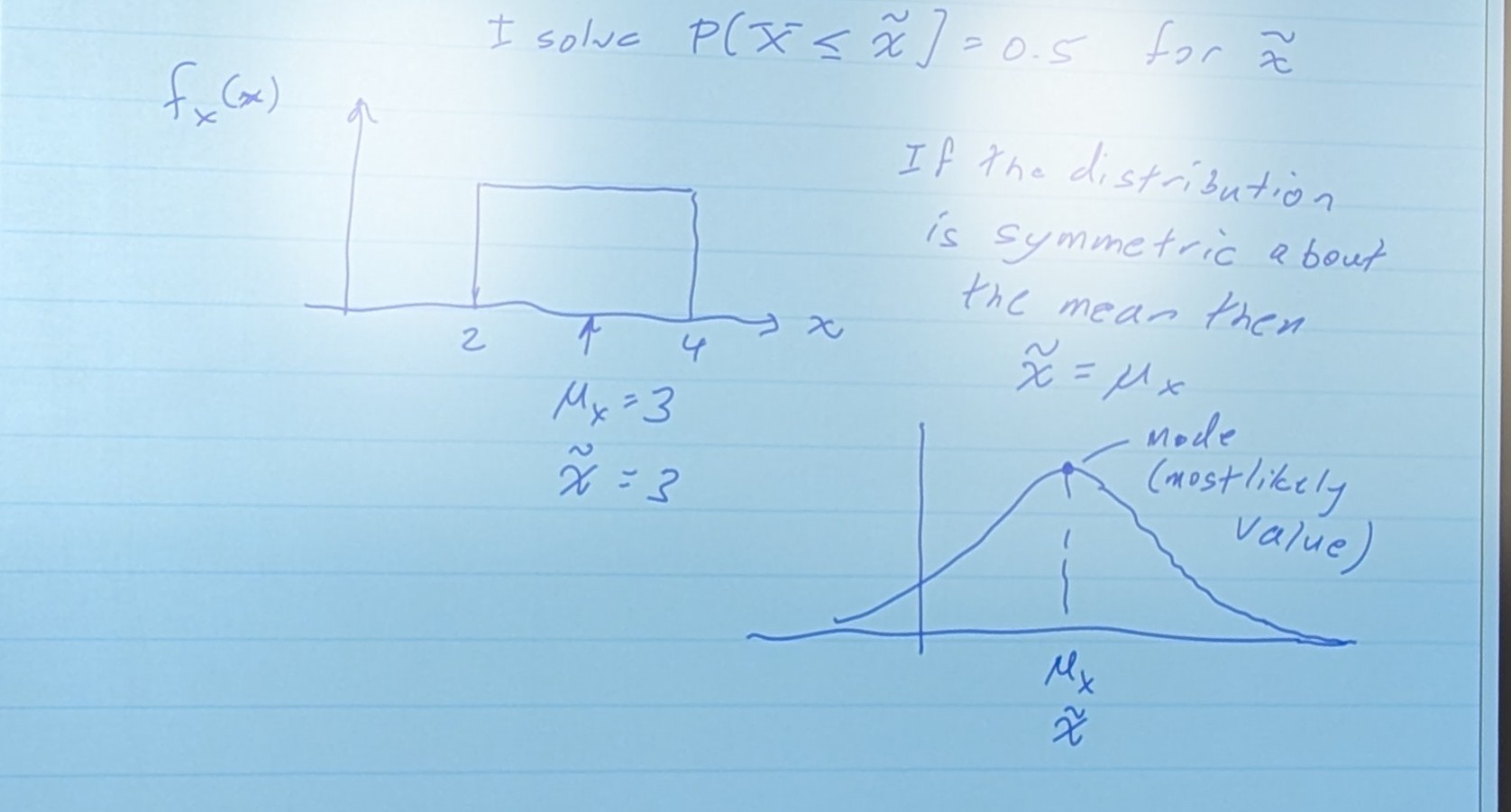
- Mode
- Most common, or likely point. Usually the highest point on one of these PDF graphs.
Expectation Operator
When I say anything, I really mean any function of X
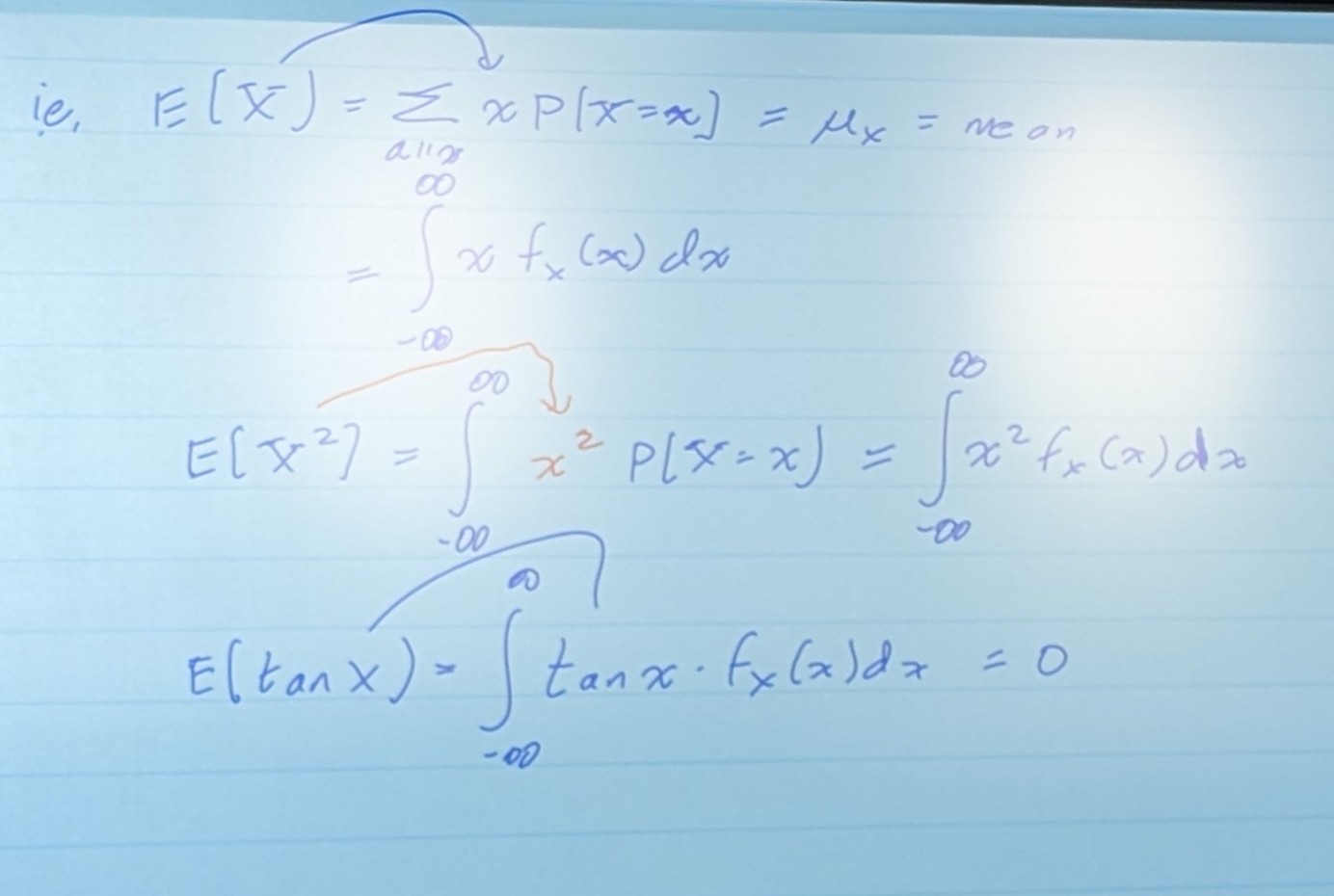
-
E(X) = Sum of all x’s times their probability of occurrence
-
E(sum) = Sum of Expectations
What about the expectation of a constant times X? E(ax)
What about the expectation of a constant, just normally?
- I mean, the number isn’t random anymore. The expectation of two… would just be two you’d hope, right?
*What about the expectation of a constant, plus a constant times X?
Measures of Variability
σ = Standard Deviation σ2 = Varience
There is a proof to say:
You can tough it out through that integral, or you can use the formula
Covarience
Now, let’s think about two random variables, X and Y

- Here, there seems to be a linear dependence between X and Y
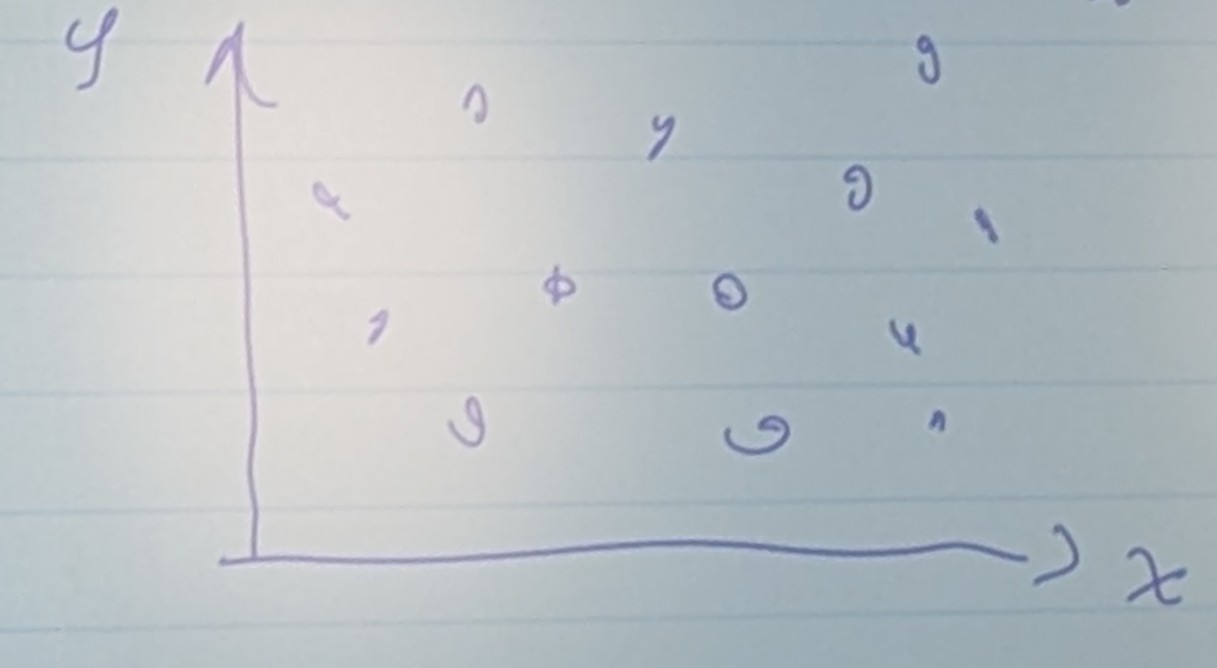
- Here, there doesn’t seem to be any dependence at all in between X and Y. Just completely random.
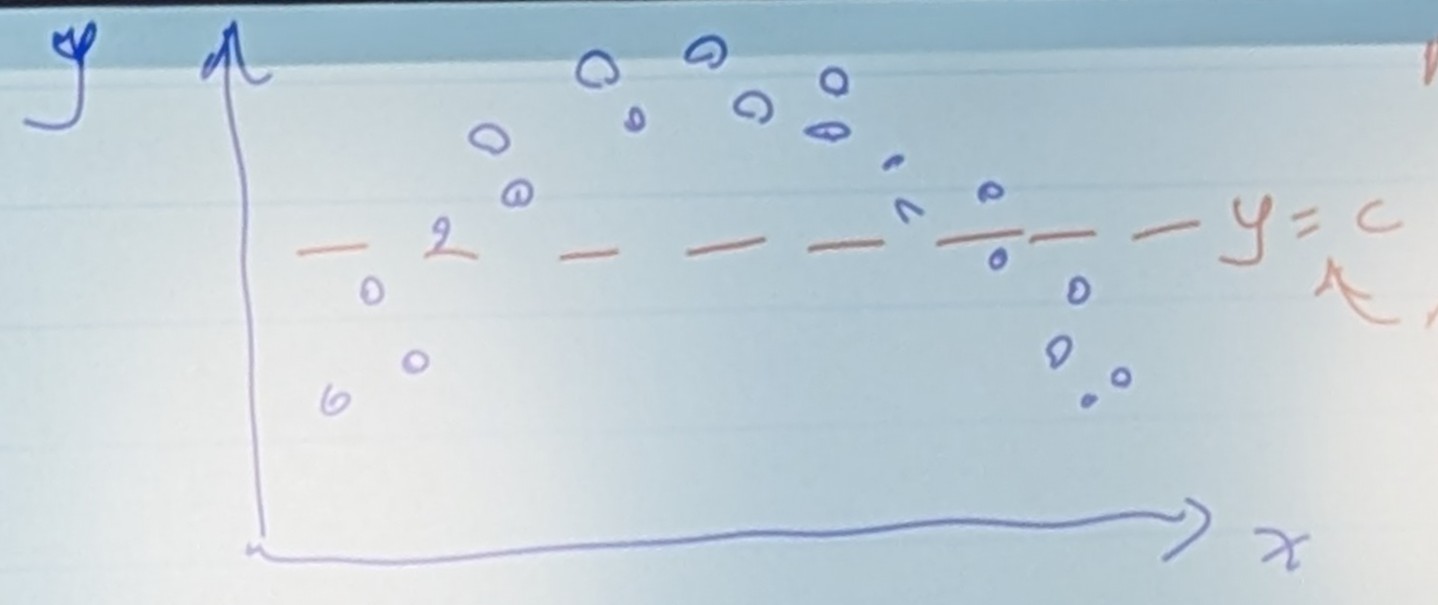
- In this case, we have non linear dependence. There’s no linear dependence here! If we draw our line of best fit, there’s a pretty telling sign here that we have no linear dependence.
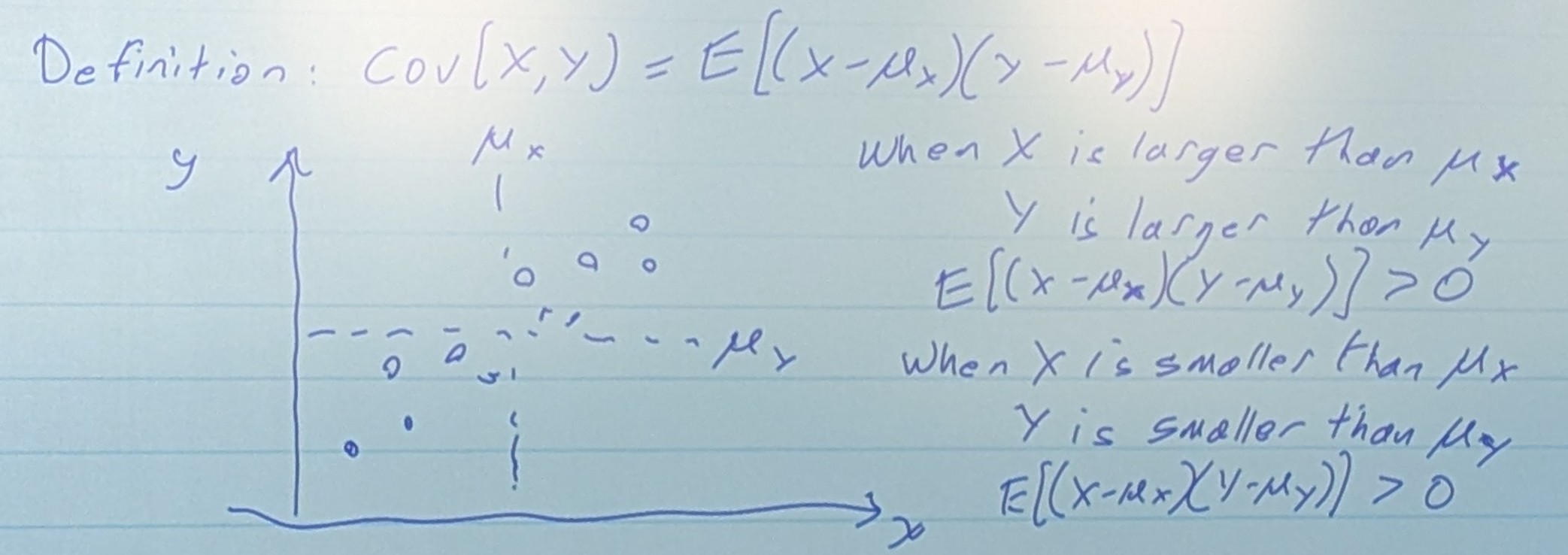
- So, Cov(X,Y) has the same sign as the slope.
There is a proof to say,
The E(XY) term is not trivial to find, and is usually either given, or solved for using the covariance.
Another point, if the Covariance is completely linearly dependent, like Y = X for example,
So if the Covariance is completely linearly dependent, it is directly equal to Varience
Correlation Coefficient
If X and Y are uncorrelated (Cov(XY) = 0), or independent (Cov(X,Y) = 0) and no other dependence
Linear Combinations
(or just a fancy way to say sum)
So typically in engineering, we have a total load capacity made up of smaller loads.
Say Y = X1 + X2
If I know about X1 and X2, what is the mean and variance of Y?
Variance is a little more complicated…
There is a proof to show that….
We get that
For example
The general rule is
